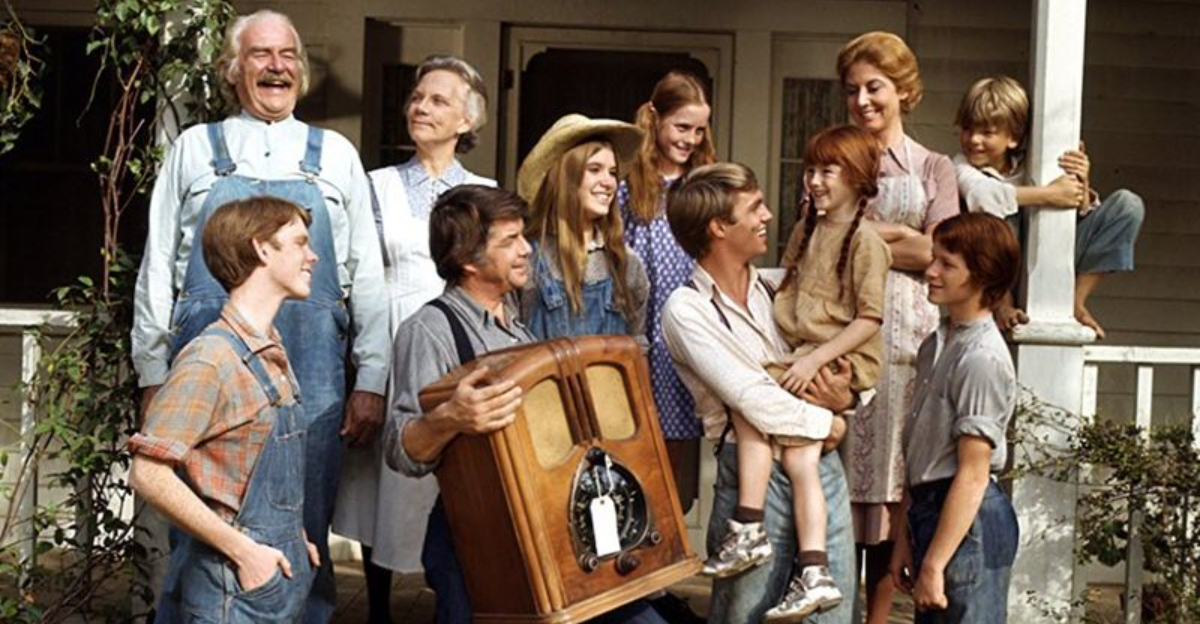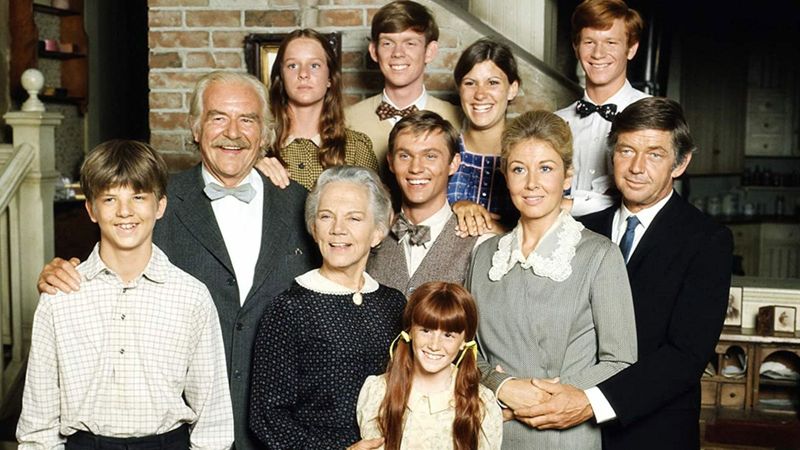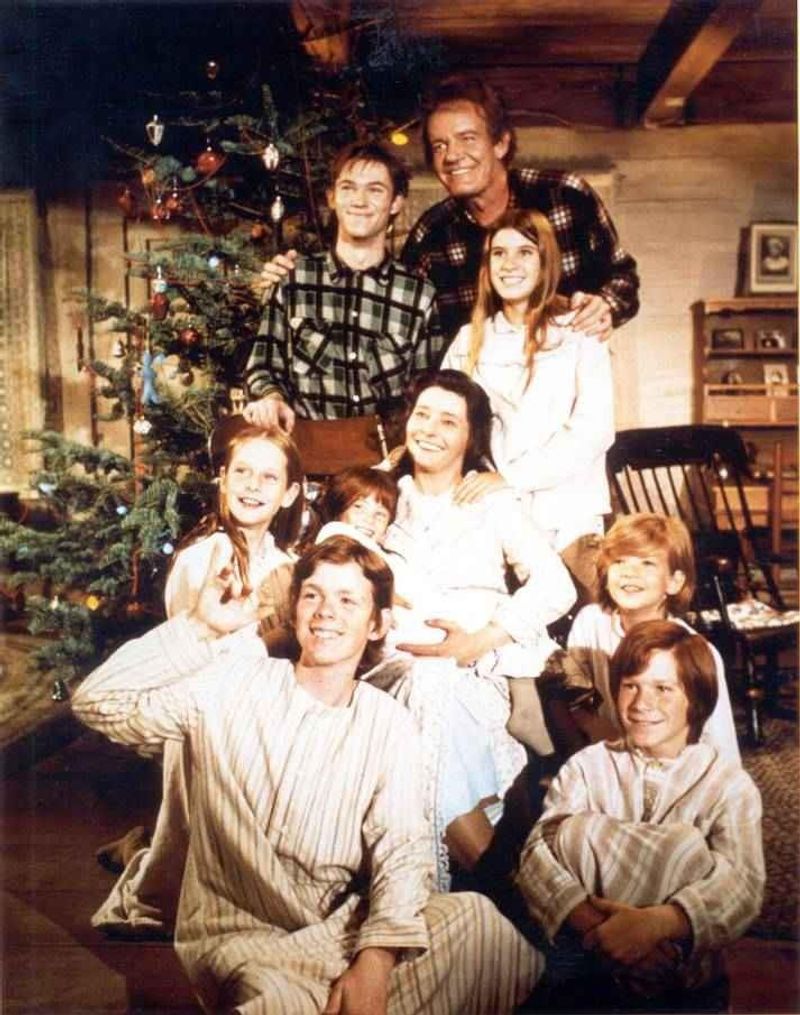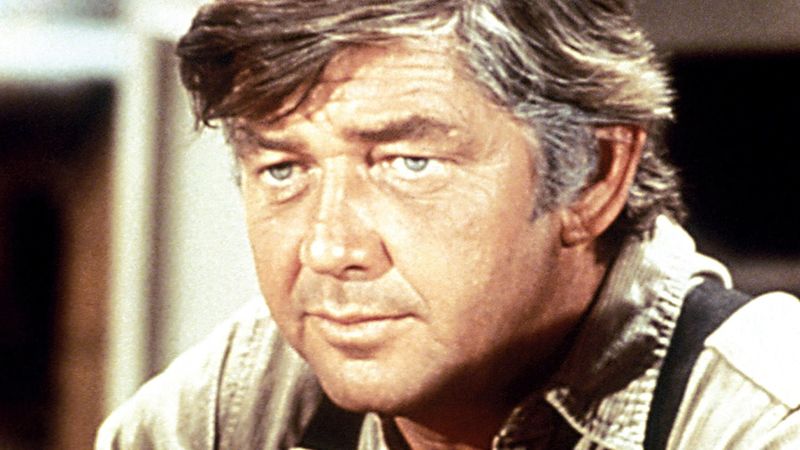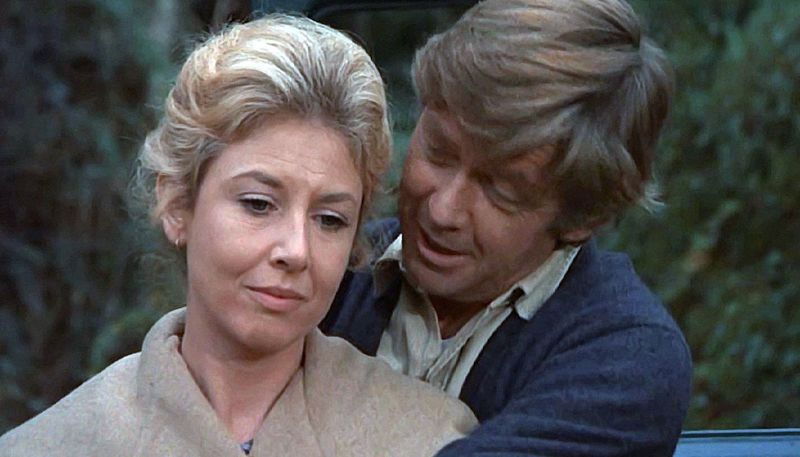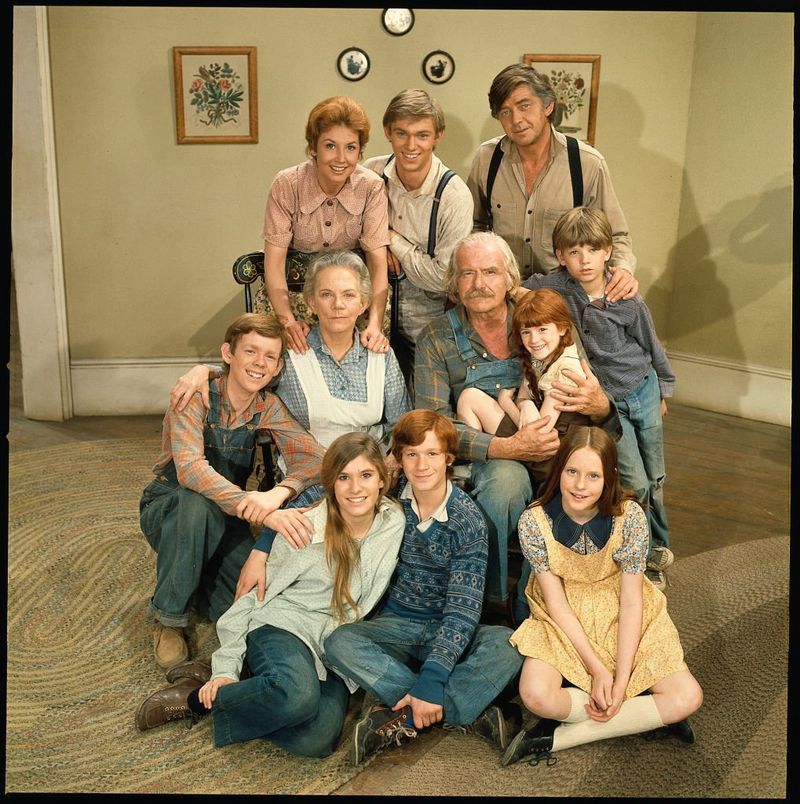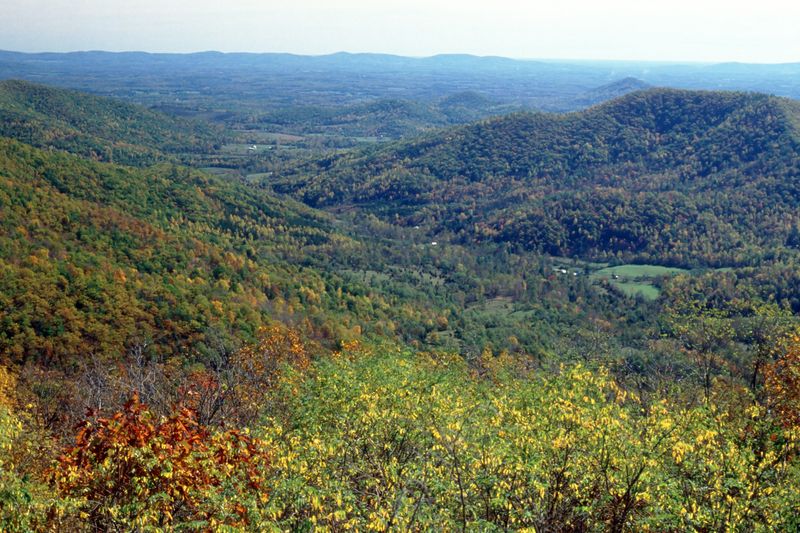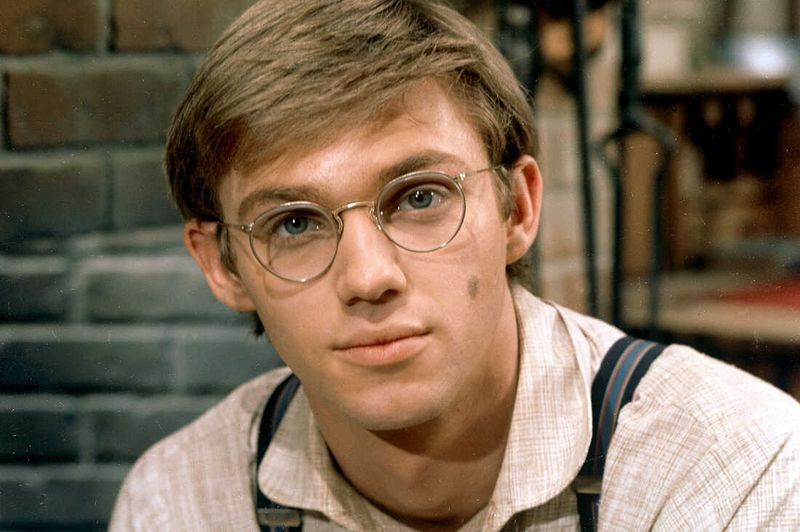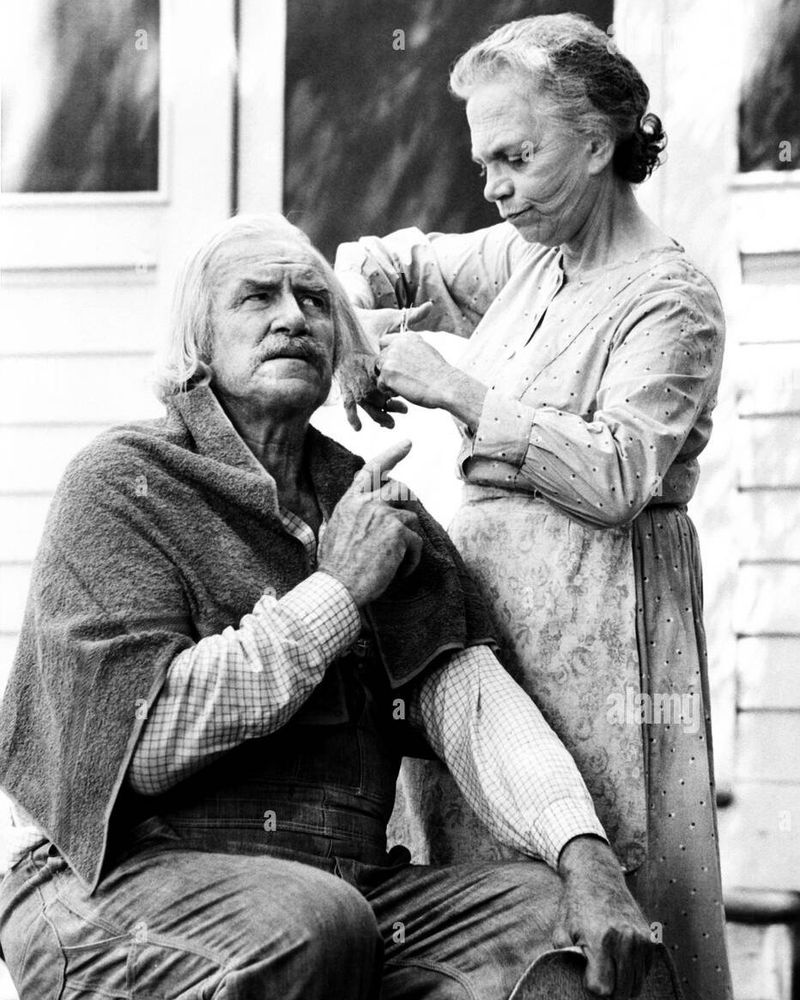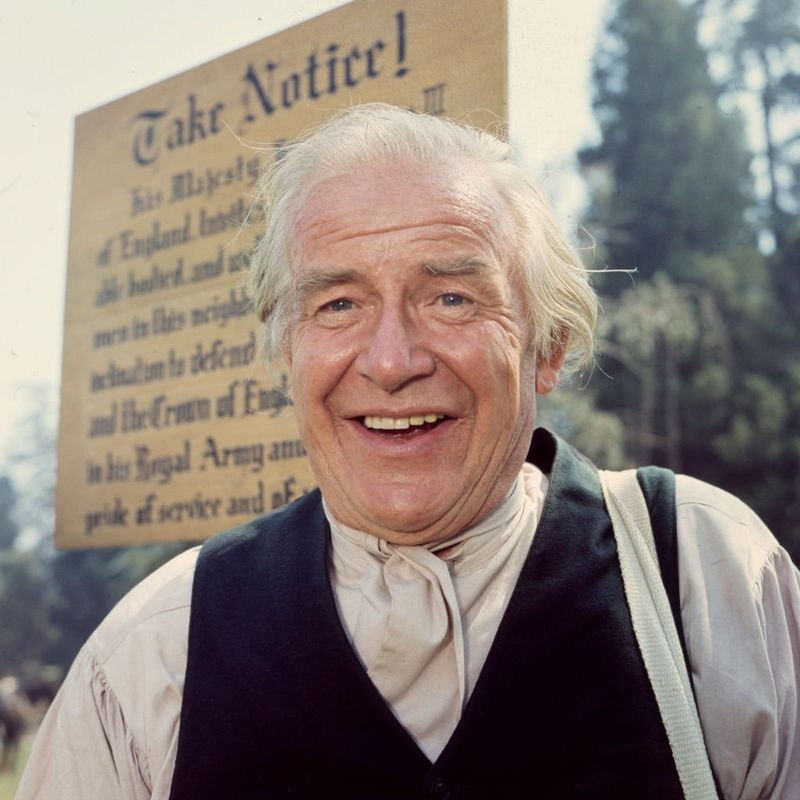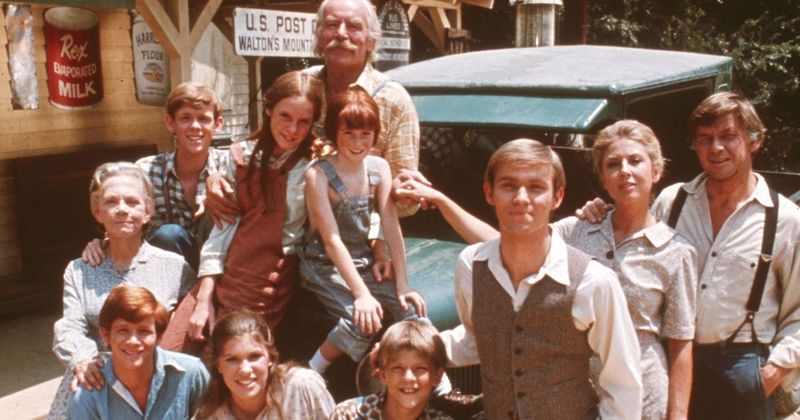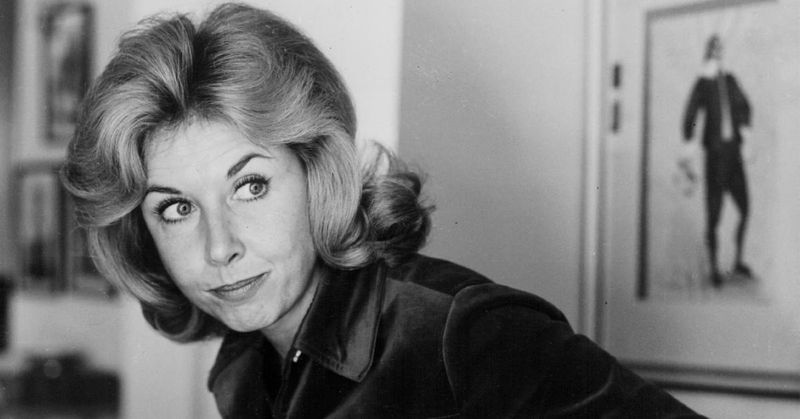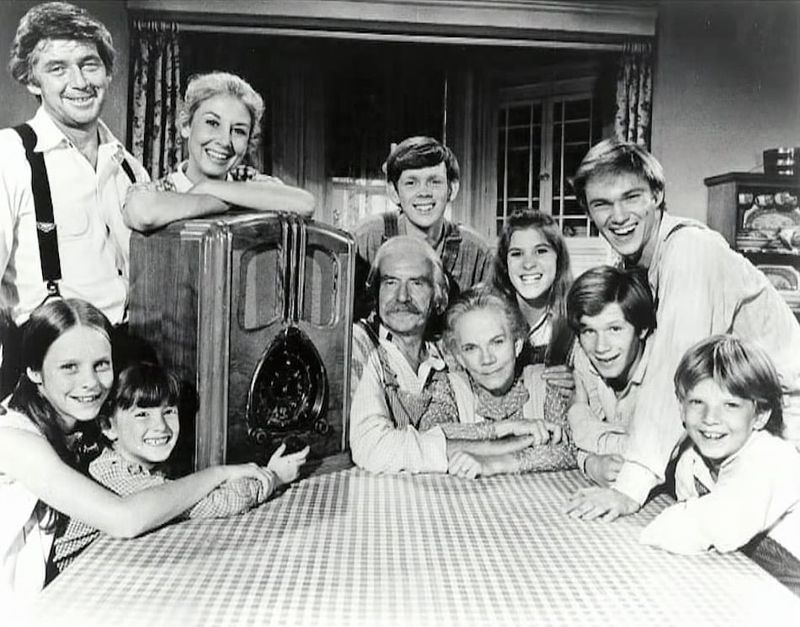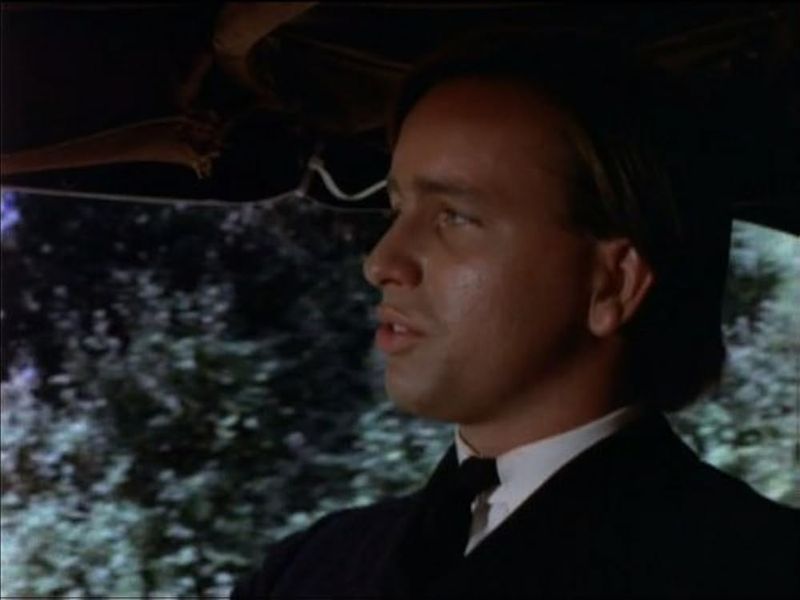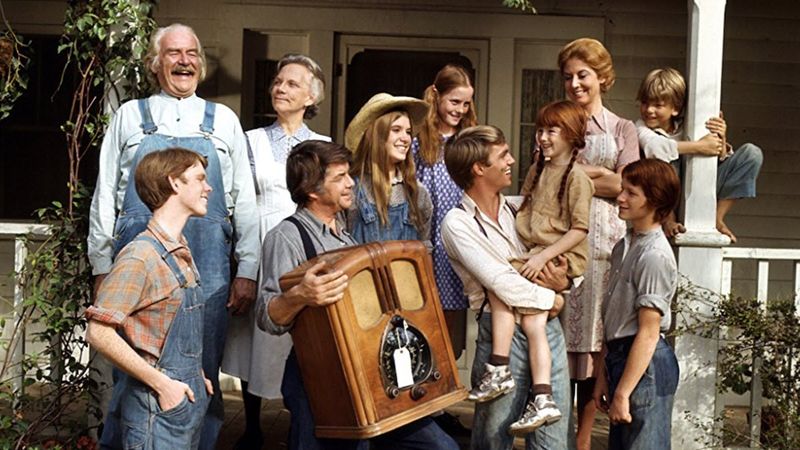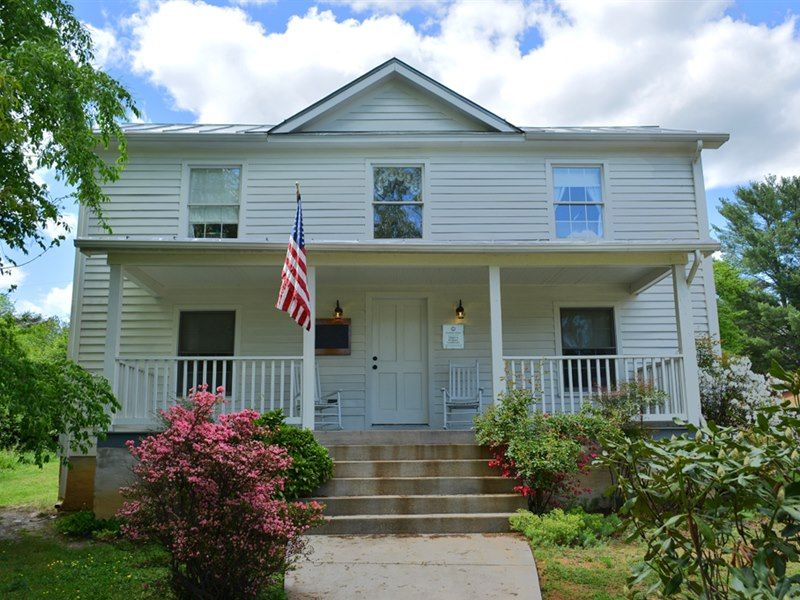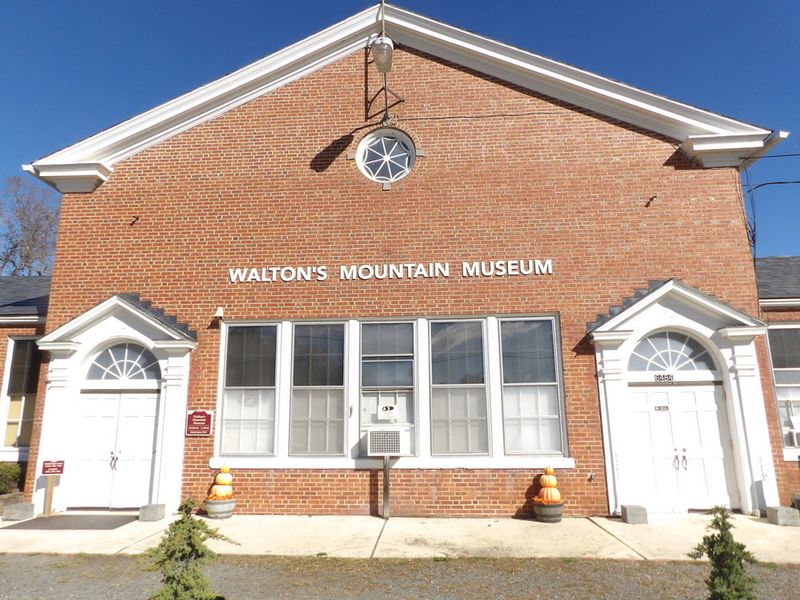“The Waltons” was a cherished television series from the 1970s, capturing the essence of family life during the Great Depression and World War II. Created by Earl Hamner Jr., the show was inspired by his own upbringing in rural Virginia. It resonated with audiences for its warmth, empathy, and moral lessons, making it a staple in American homes. With its memorable characters and heartfelt storytelling, “The Waltons” continues to be celebrated for its enduring legacy.
1. The Show Was Based on a Real Family
The creator, Earl Hamner Jr., drew inspiration from his own childhood experiences, growing up in the rural landscapes of Virginia. His family’s life provided the backdrop for the beloved series, bringing a sense of authenticity and nostalgia. The genuine experiences of his upbringing were woven into the show’s fabric, resonating with viewers who found familiarity and warmth in its stories. This connection to real-life events added depth and sincerity, making “The Waltons” a relatable and heartfelt depiction of family life.
2. It Started with a Christmas Movie
The journey of “The Waltons” began with the 1971 film, “The Homecoming: A Christmas Story.” Its success sparked the creation of the television series, capturing the hearts of audiences. Centered around a family’s Christmas reunion during the Great Depression, the film’s warmth and charm led CBS to order a series. The movie’s success was a testament to the timeless appeal of family bonds and traditions, paving the way for the beloved show. Viewers were enchanted by its heartfelt narrative, setting the stage for the series’ enduring success.
3. Ralph Waite Was Like a Real Father to the Cast
Ralph Waite, who portrayed John Walton Sr., extended his fatherly role off-screen, becoming a mentor to the younger cast members. His genuine care and guidance created a nurturing environment, fostering lifelong friendships among the cast. Especially close to Richard Thomas, who played John-Boy, Waite’s influence was profound. His presence mirrored the character he played, embodying the warmth and wisdom of a paternal figure. This real-life bond enriched the show’s dynamic, adding authenticity to their on-screen family interactions.
4. Michael Learned Was a Last-Minute Casting
In a dramatic twist, Michael Learned was cast as Olivia Walton just days before filming. Her last-minute addition brought a fresh energy and depth to the role. Despite the rushed casting process, Learned’s portrayal became central to the show’s success. Her ability to convey warmth and strength made Olivia Walton a beloved character. The urgency of her casting added an unexpected layer of excitement and spontaneity to the production, resulting in a performance that resonated deeply with audiences.
5. The Cast Formed Lifelong Friendships
The bonds formed on “The Waltons” set transcended the screen, leading to lifelong friendships among the cast. The genuine camaraderie they shared was palpable, enhancing their on-screen chemistry. Many of the actors, decades after the show ended, remain close, reflecting the deep connections built during filming. Their shared experiences and mutual respect created a family-like atmosphere, which was evident in the warmth and authenticity of their performances. This enduring friendship adds a special touch to the legacy of “The Waltons.”
6. The Real “Waltons Mountain” Exists
Waltons Mountain, the iconic backdrop of the series, is based on a real location in Schuyler, Virginia. This picturesque setting, where creator Earl Hamner Jr. grew up, brought realism to the series. The tranquil beauty of the Blue Ridge Mountains served as a constant reminder of simpler times and the enduring connection to home. Schuyler’s landscapes and community spirit inspired much of the show’s atmosphere. Today, fans visit this charming village, celebrating its role in the beloved series’ history.
7. Richard Thomas Wore a Mole to Match the Real John-Boy
To faithfully portray John-Boy Walton, Richard Thomas donned a mole, mirroring Earl Hamner Jr.’s real-life facial feature. This attention to detail added authenticity, connecting the character to his real counterpart. The mole became a subtle yet significant symbol, emphasizing the personal nature of the series. Thomas’s commitment to embodying John-Boy’s essence was evident in such thoughtful touches. This detail highlighted the dedication to realism and the close ties to Hamner’s own life, enhancing the show’s grounding in reality.
8. The Show Addressed Serious Issues
Despite its warm, nostalgic tone, “The Waltons” tackled challenging issues such as alcoholism, racism, and war. The series addressed these topics with sensitivity, reflecting the complexities of the era it depicted. This brave storytelling provided viewers with honest portrayals, resonating deeply as they mirrored real-world struggles. By confronting these serious themes, the show offered a balance of heartfelt family moments and thought-provoking narratives, contributing to its acclaim. This blend of warmth and realism distinguished “The Waltons” as a remarkable series.
9. Grandma and Grandpa Walton Were TV Favorites
Ellen Corby and Will Geer, portraying Grandma and Grandpa Walton, became iconic figures, beloved by audiences. Their heartfelt performances brought depth and warmth, earning them Emmy Awards. The duo’s chemistry and wisdom provided a foundation for the family-oriented show, resonating with viewers who cherished their nurturing presence. Their characters embodied timeless values, serving as anchors for the Walton family. The accolades they received were a testament to their vibrant portrayals, enriching the tapestry of “The Waltons” with humor and love.
10. Will Geer Was a Blacklisted Actor
Before becoming a cherished figure on “The Waltons,” Will Geer faced adversity as a blacklisted actor during the McCarthy era. His refusal to testify before the House Un-American Activities Committee led to professional ostracism. Geer’s resilience and talent eventually found a home on “The Waltons,” where he delivered performances full of charm and wisdom. His journey from blacklisting to beloved TV icon is a testament to his perseverance. This history added layers to his character, Grandpa Walton, enriching the show’s authenticity.
11. The Iconic Goodnight Scene Was Ad-Libbed
The famous “Goodnight, John-Boy” scene, cherished by fans, was not in the original script. It emerged organically, capturing the essence of family life. This spontaneous addition became a beloved tradition, epitomizing the warmth and unity of the Walton family. Its authenticity resonated with audiences, becoming an iconic moment in television history. The ad-libbed nature of the scene highlighted the natural chemistry among the cast, further endearing “The Waltons” to viewers. This unscripted magic added a genuine touch to the series.
12. Michael Learned Hid Her Divorce at First
Michael Learned, initially introduced as “Miss Michael Learned,” kept her divorce under wraps to maintain her image. Producers chose this billing to avoid confusion, as her personal life contrasted with her TV character, Olivia Walton. Despite personal challenges, Learned’s performance on “The Waltons” was marked by resilience and grace. Her ability to balance personal privacy with public life added depth to her portrayal. This decision reflected the era’s social norms, offering a glimpse into the complexities faced by women in the entertainment industry.
13. It Beat Out Tough Competition
“The Waltons” overcame initial low expectations to become a ratings powerhouse, surpassing shows like “The Flip Wilson Show” and “The Mod Squad.” Its triumph in the ratings game was unexpected, reflecting its strong appeal. The series’ ability to capture the hearts of viewers led to sustained popularity, defying industry predictions. This success highlighted the power of storytelling rooted in family values and authentic experiences. The show’s rise to prominence in a competitive landscape underscored its unique charm and enduring appeal.
14. The Show Won Two Golden Globes
In recognition of its excellence, “The Waltons” was awarded Best TV Drama Series at the Golden Globes in 1973 and 1974. These accolades underscored the show’s impact on television, celebrating its storytelling and performances. The awards reflected the series’ ability to resonate with both audiences and critics, affirming its place in TV history. Winning not just once, but twice, reinforced the show’s remarkable achievement. These honors served as a testament to the dedication and talent behind the beloved series, cementing its legacy.
15. John Ritter Had a Recurring Role
Before becoming a household name, John Ritter appeared on “The Waltons” as Reverend Matthew Fordwick. His recurring role on the series showcased his comedic and dramatic talent, paving the way for future success. Ritter’s time on “The Waltons” provided valuable experience, allowing him to hone his craft. His character brought a unique dynamic to the show, blending humor and sincerity. This early role was a stepping stone in Ritter’s illustrious career, highlighting his versatility. His performance resonated, leaving a memorable mark on the series.
16. There Were Multiple Reunion Movies
The enduring popularity of “The Waltons” led to six made-for-TV reunion films, spanning from 1982 to 1997. These movies revisited the beloved characters, bringing nostalgia and new stories to fans. Each film offered a glimpse into the evolving lives of the Walton family, blending continuity with fresh narratives. The reunion movies kept the spirit of the series alive, allowing audiences to reconnect with cherished characters. These films demonstrated the lasting bond between the cast and their devotion to the series’ legacy.
17. The Waltons House Was Used in Other TV Shows
The iconic house from “The Waltons” became a versatile set piece, appearing in shows like “The Dukes of Hazzard” and “Gilmore Girls.” Its distinctive structure and charm made it a favorite for various productions. This reuse highlighted its timeless appeal, connecting different generations of viewers through familiar backdrops. The house’s continued presence on television underscored its role in TV history, symbolizing an era of storytelling centered around family and community. Its enduring legacy speaks to its architectural and cultural significance.
18. The Spirit of the Show Still Lives On
Fans continue to celebrate “The Waltons” by visiting Walton’s Mountain Museum in Virginia. This site preserves the spirit of the show, offering a nostalgic journey. The museum captures the essence of the beloved series, featuring memorabilia and exhibits that transport visitors back to the era of the Waltons. It stands as a testament to the show’s enduring legacy and its impact on popular culture. By preserving the history and heart of “The Waltons,” the museum allows new generations to discover its timeless charm.
